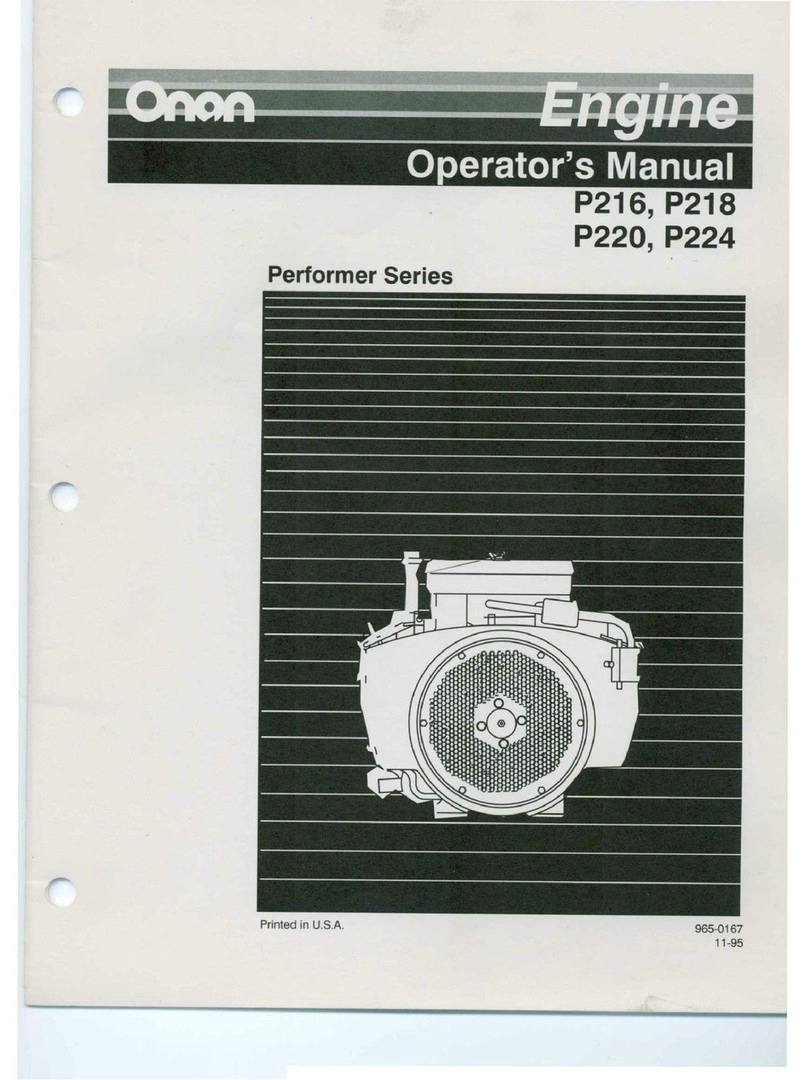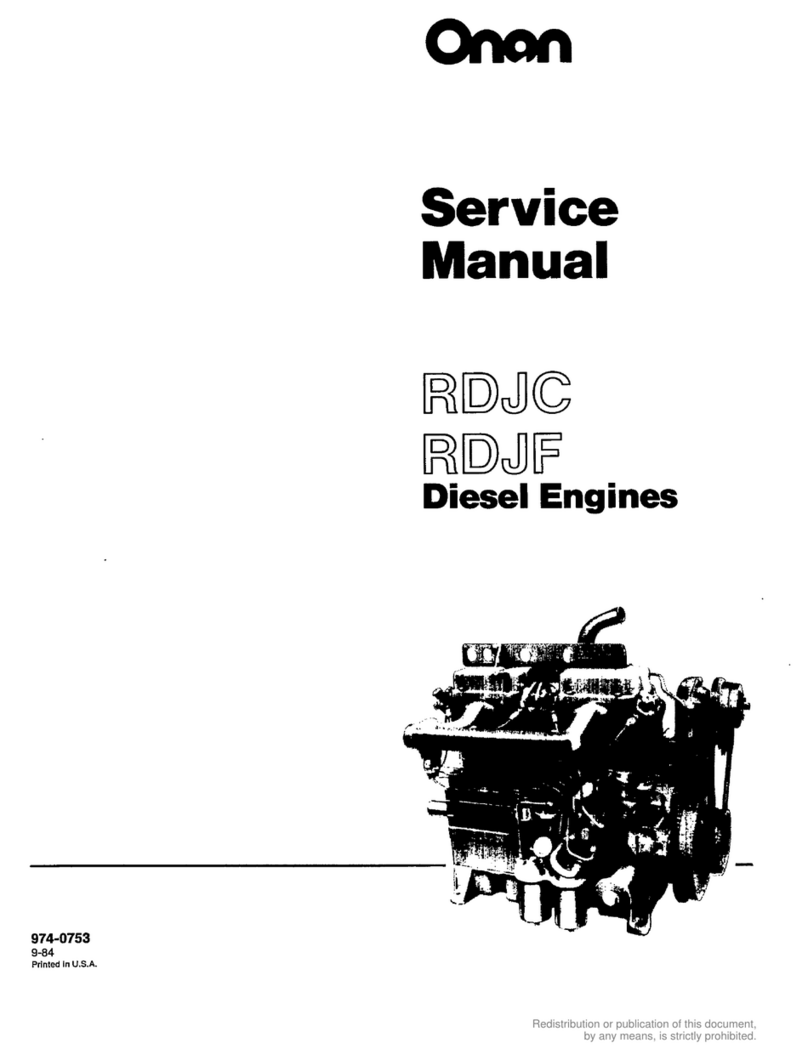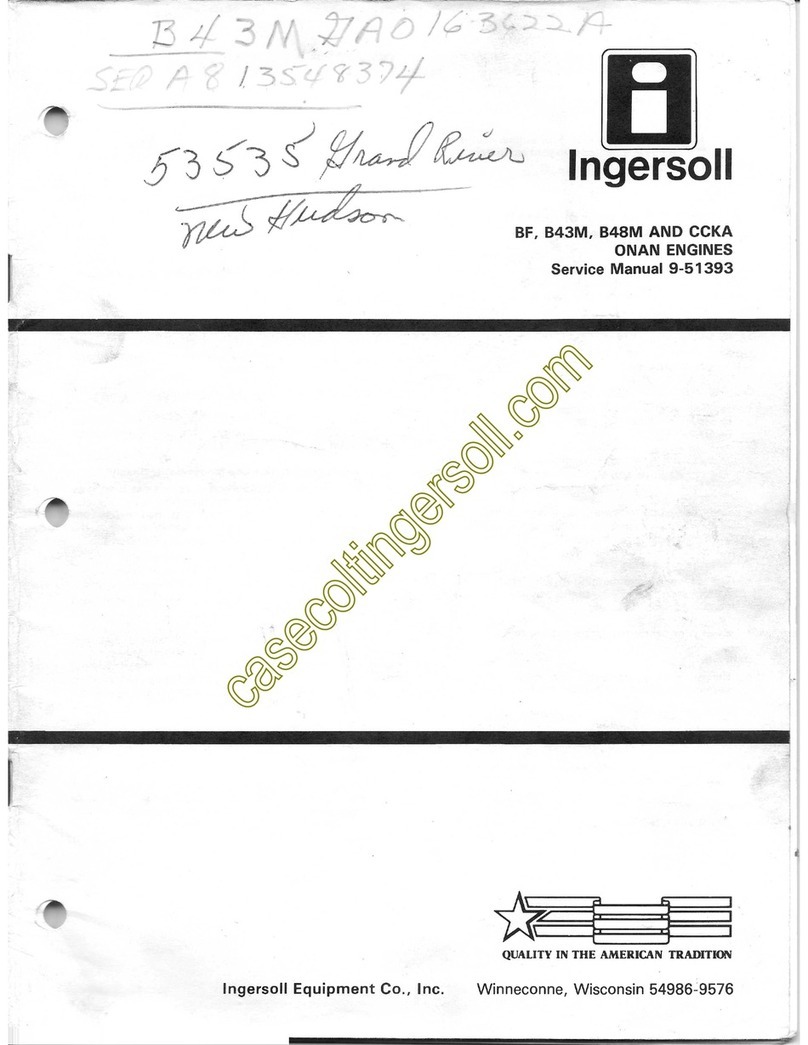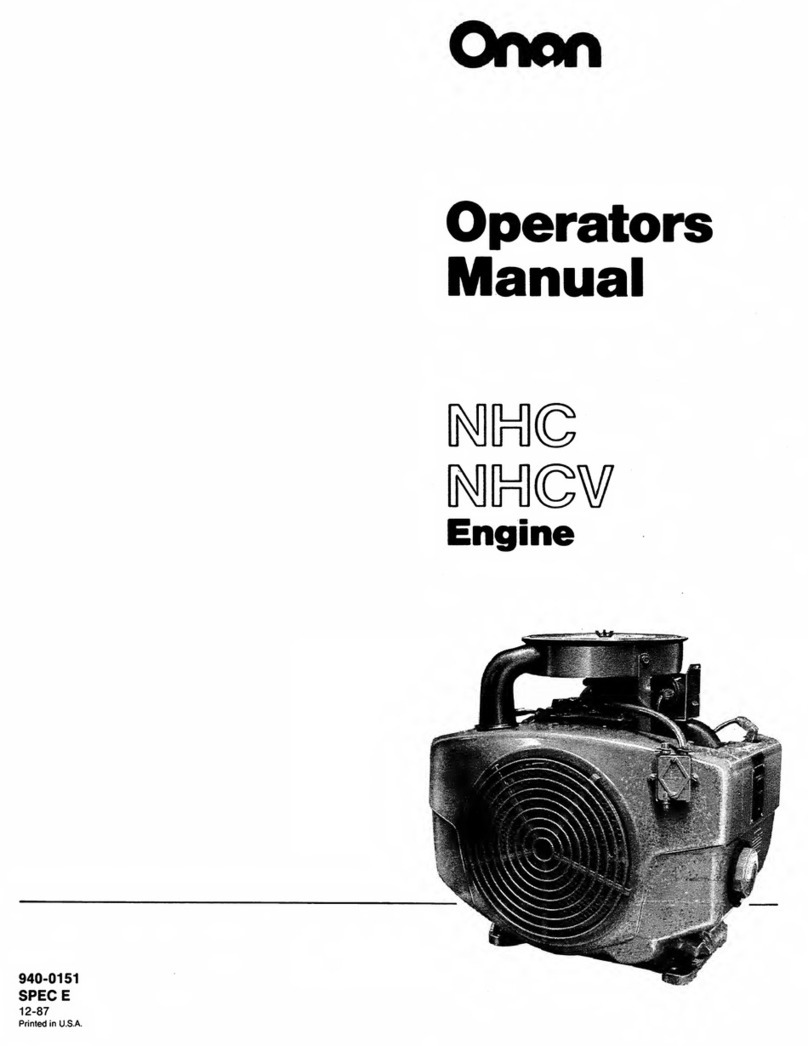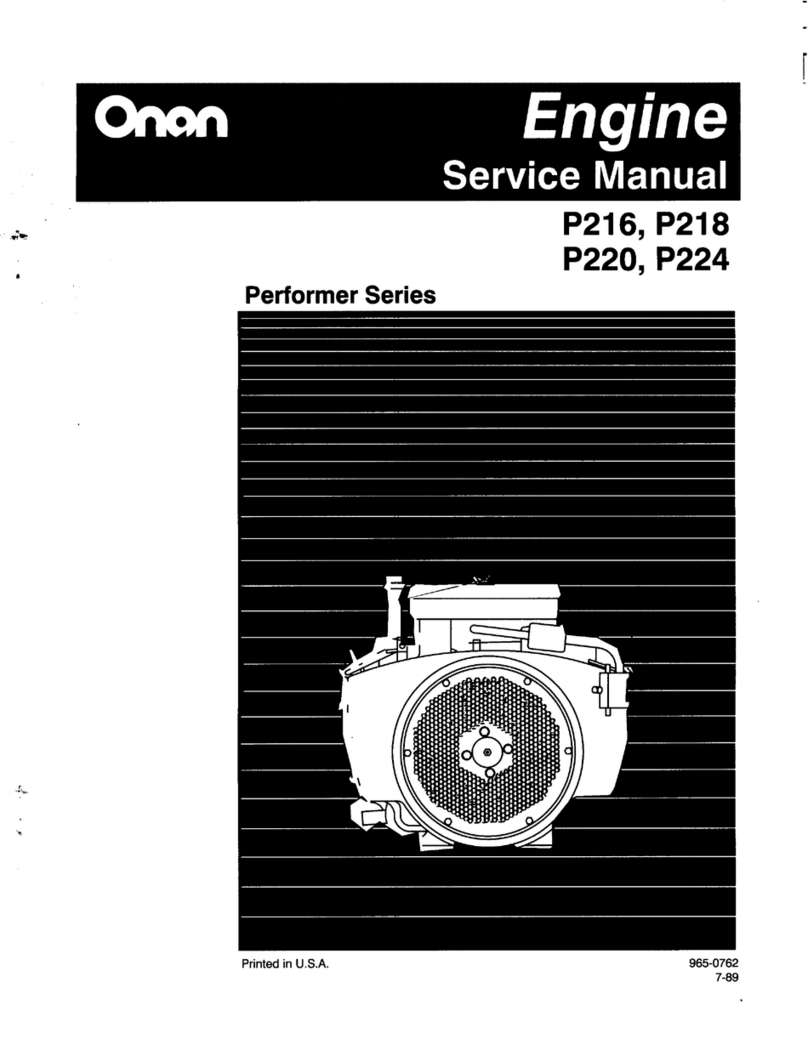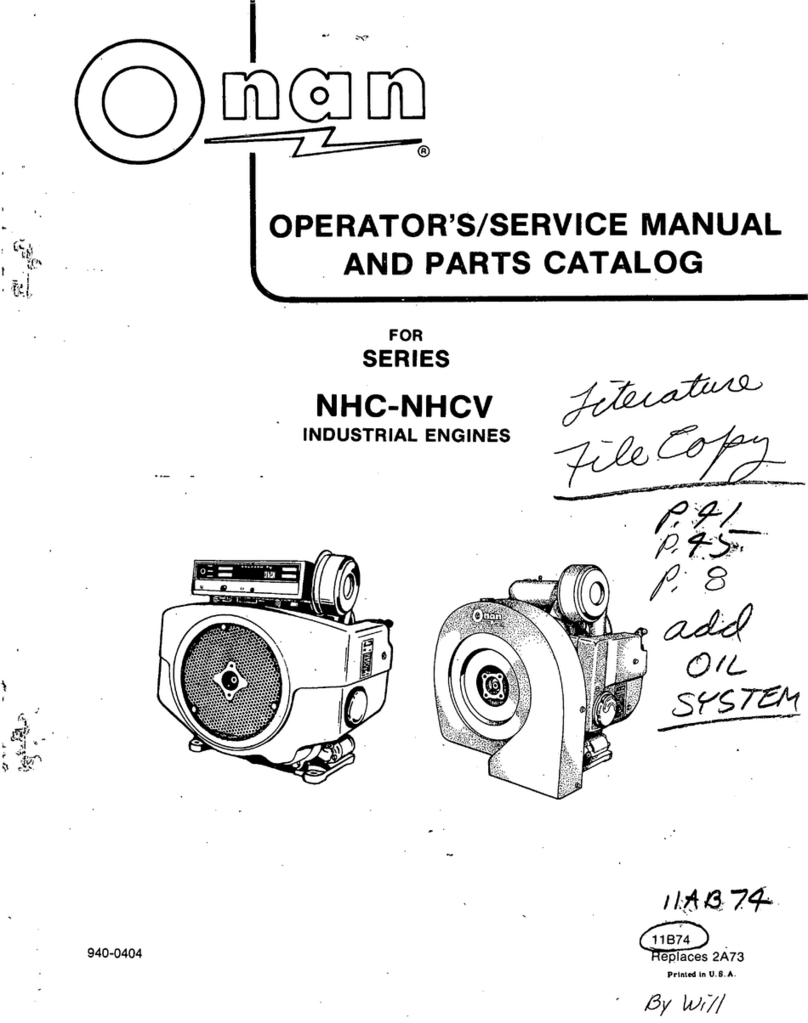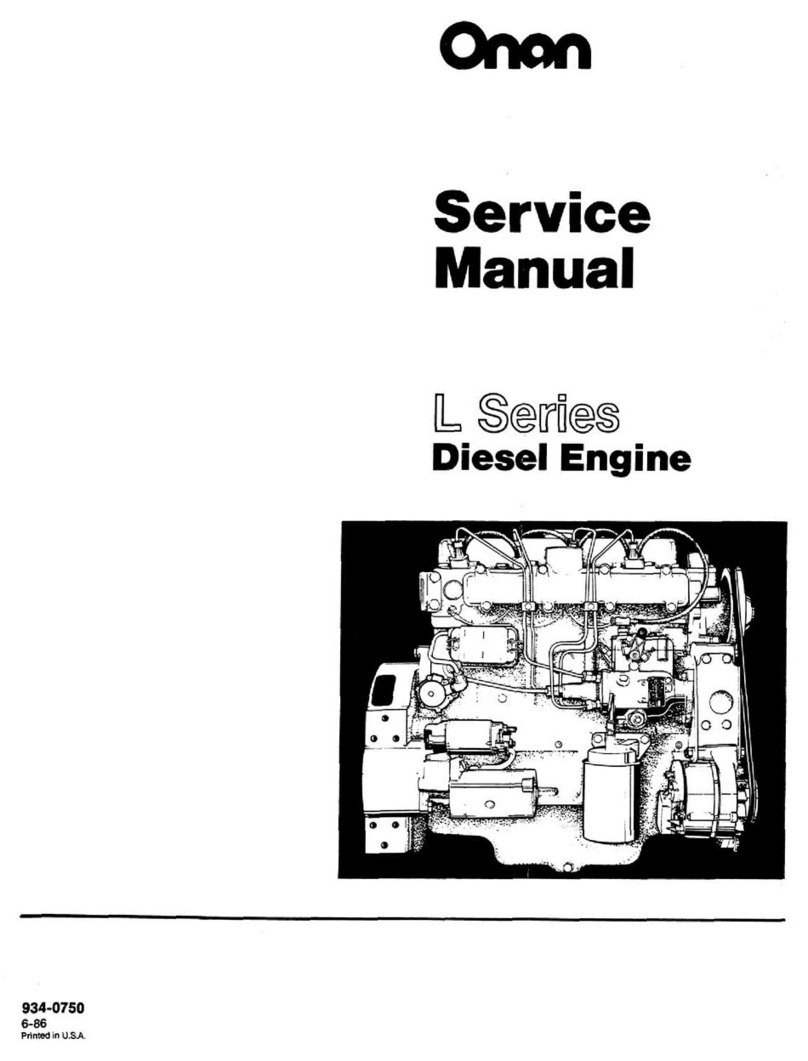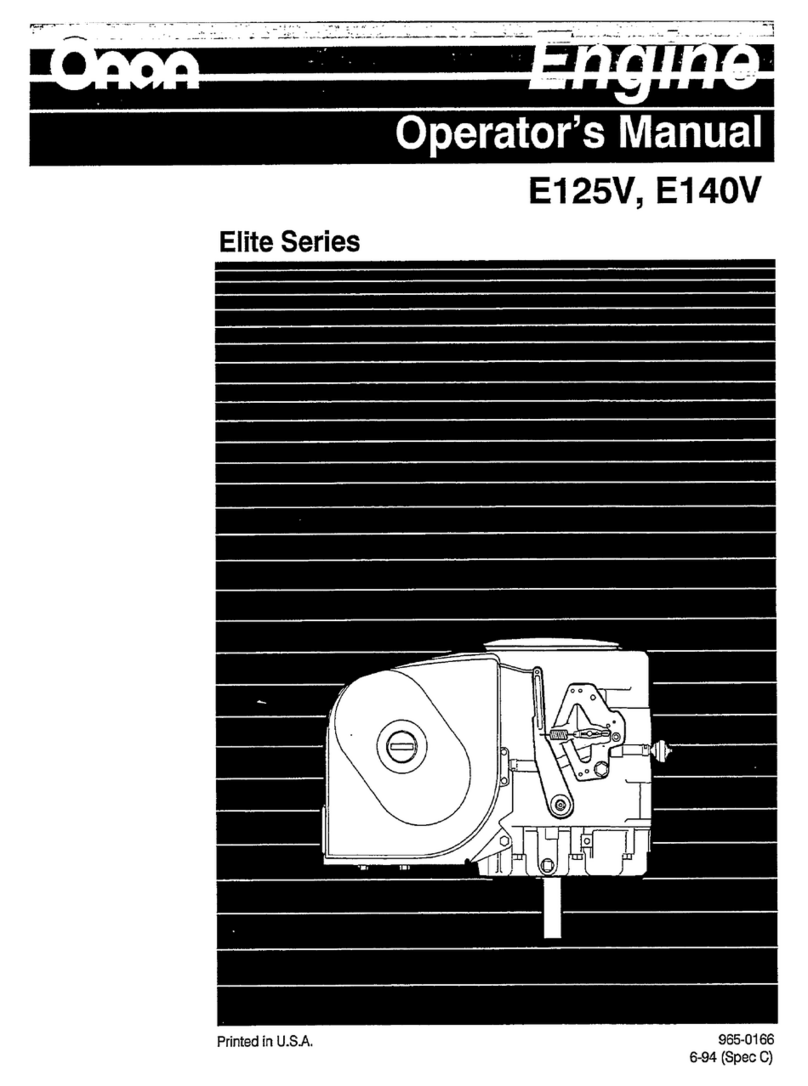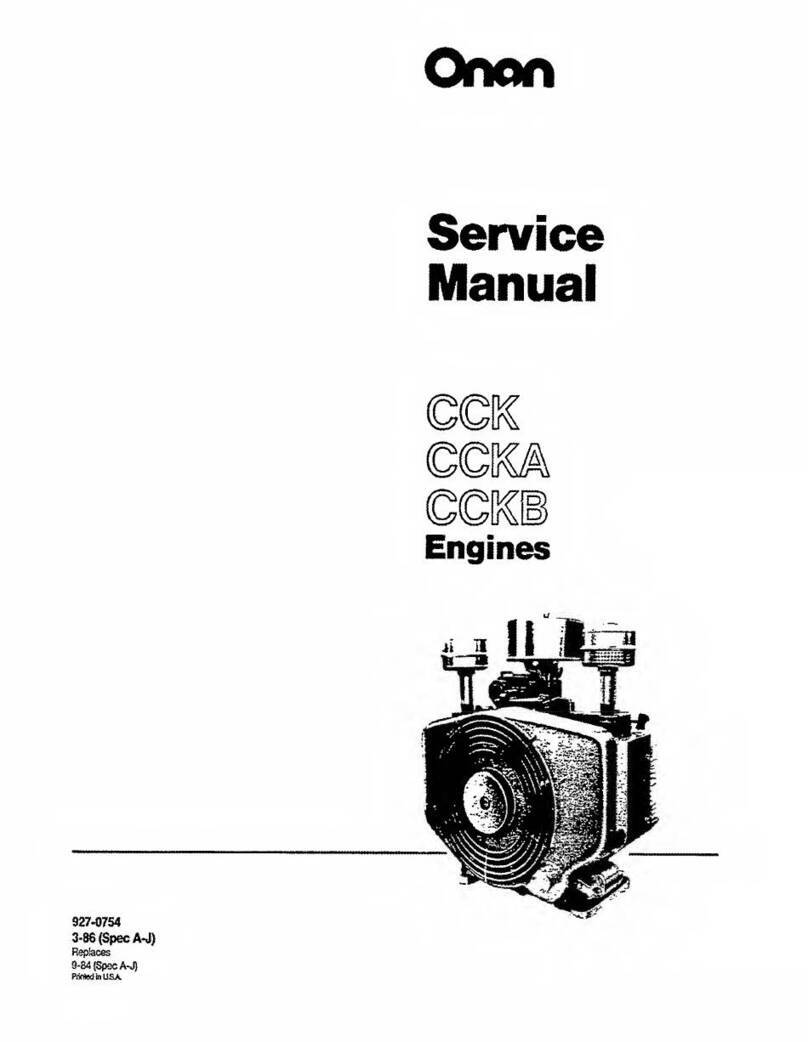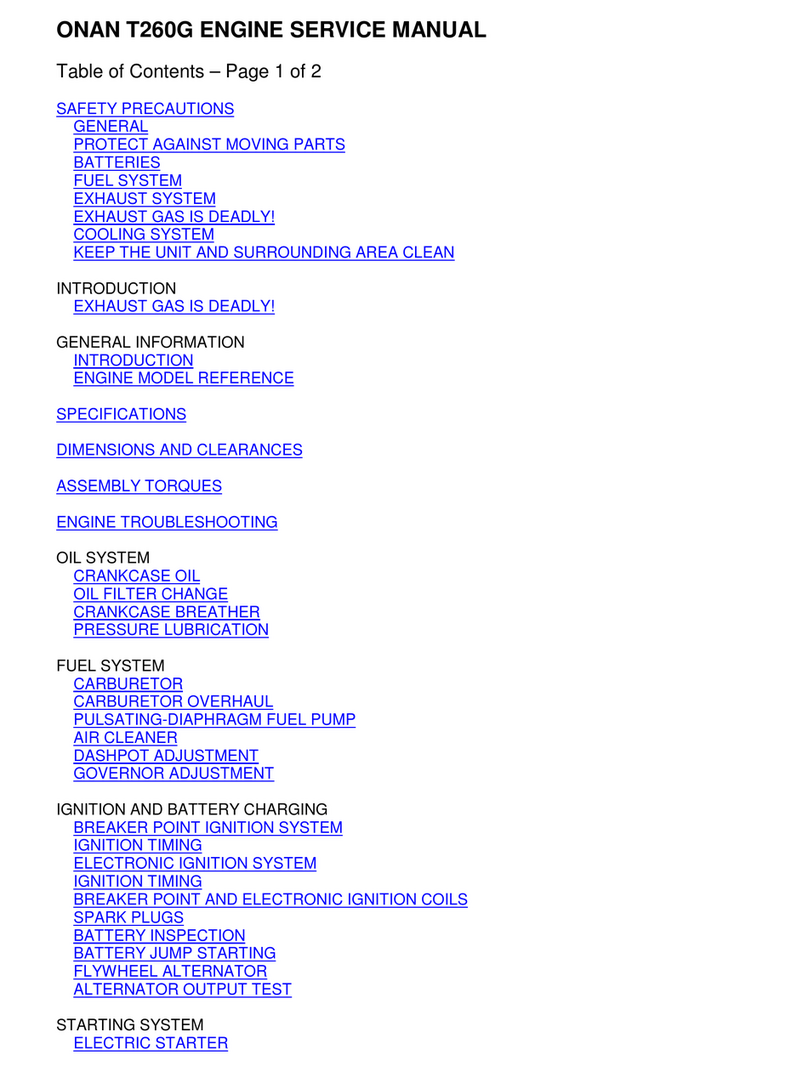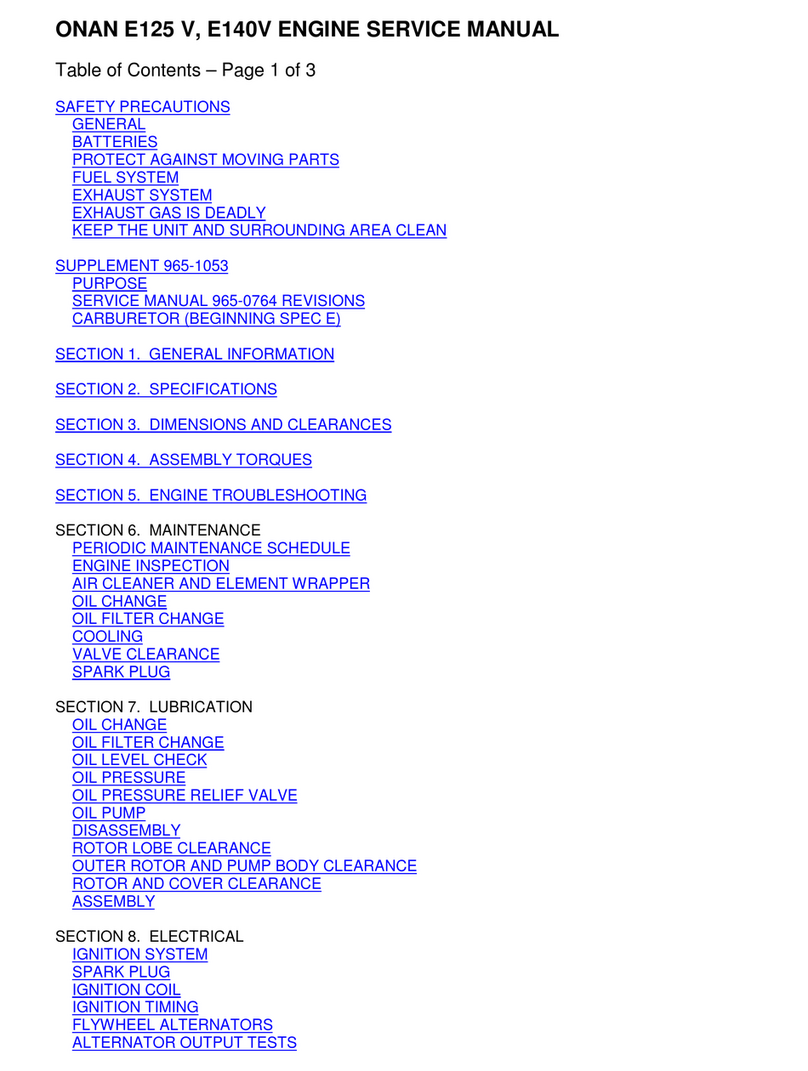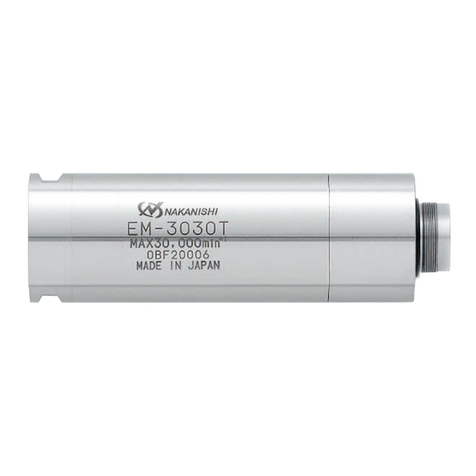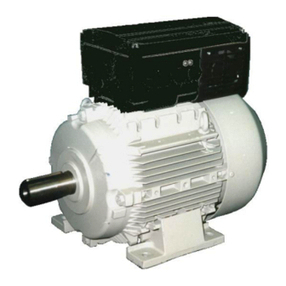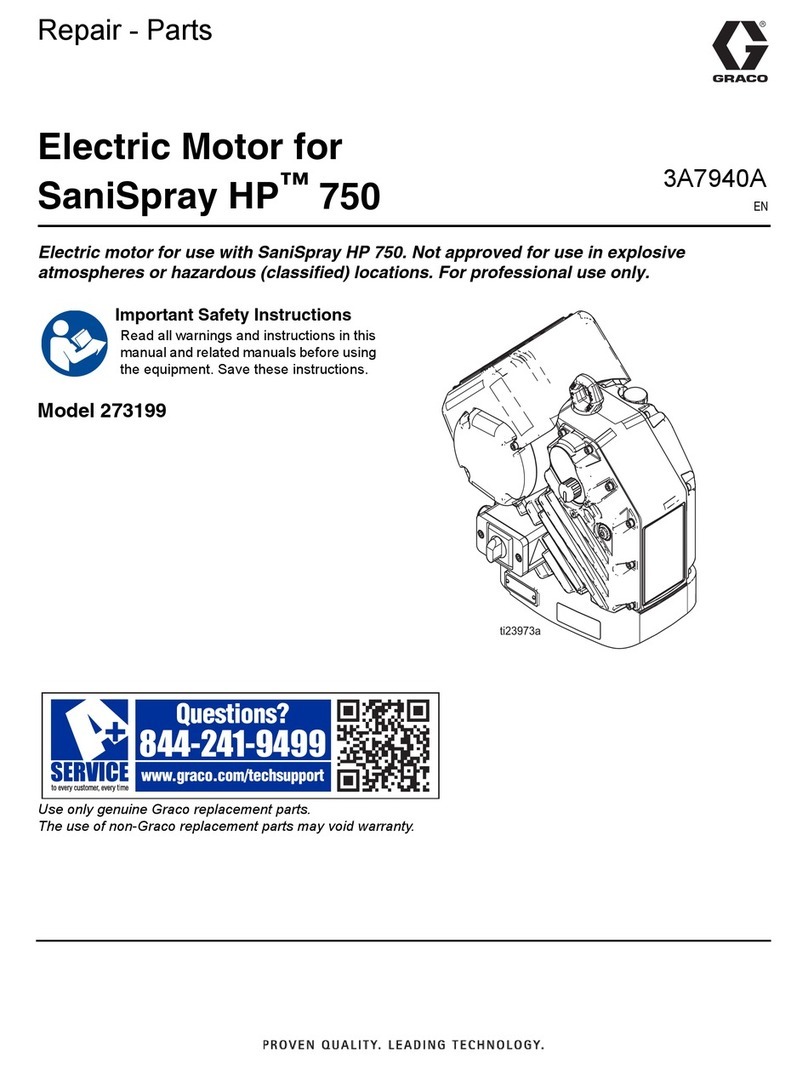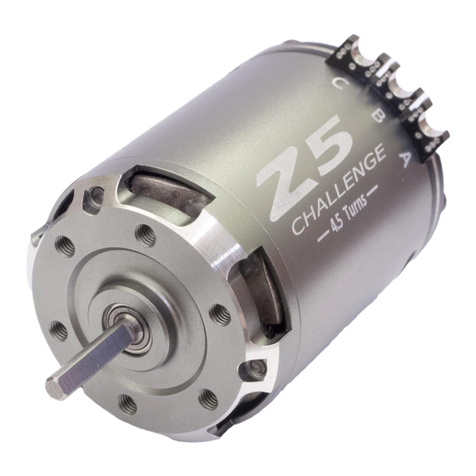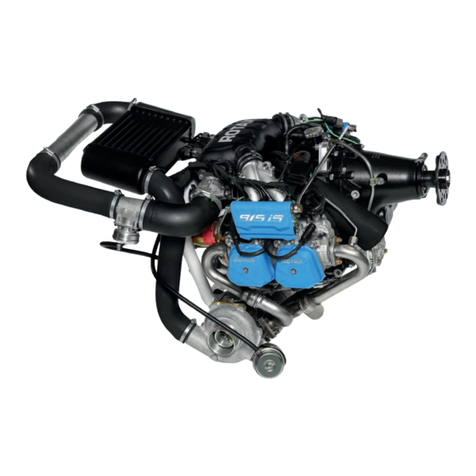
GENERAL
The initial installation is very important. Plan it
carefully to ensure maximum operating efficiency.
Use this manual as a general guide. Recommen-
dations are based on extensive tests underfavorable
operating conditions. Conform to local, state or
federal codes regulating the installation and opera-
tion of internal combustion engines.
LOCATION
Engine location isdeterminedchiefly bytheintended
application. Provide adequate access for service and
repair. Protect the engine from adverse weather.
Consider location of related systems, such as fuel,
exhaust and ientilation.
MOUNTING
Secure the engine to a rigid, level foundation. See
Figures
1
and 2for typical installations. Foundations
must besturdy enough to withstand distortion andto
retain alignment with related equipment.
If necessary to exceed 23 degree tilt angle, consult
factory for maximum allowable angle. Compensate
for any tilt when checking crankcase oil.
VENTILATION
Providesufficient fresh airintakeandexhaust ventila-
tion to support combustion and cool the engine and
generator. Avoid recirculation of ventilating air to
preventengineoverheating.See
Specifications
forair
flow requirements and vent sizes.
Locate vents
so
the flow of air from the inlet to the
outlet passes over the engine. The outlet should be
slightly higherthan the inlet.Allow for heatproduced
by related equipment. See Figures
1
and 2.
An optional air shutter may beusedattheoutlet vent
to control enginetemperature by regulating air flow.
Air shutters also prevent the backflow of cold air
during engine shut-down.
When air ducts are used between the engine and
outlet vent, use a section of canvas to restrict
vibration, as shown in Figure 2.
EXHAUST
WAGIN
ING
Exhaustgasispoisonous.Pipeexhaustgases
u
outside. Exhaust pipes must not terminate
near ventilationsystem inlet vents.
1.
Avoid sharp bends.
2. Use sweeping, long-radius elbows.
3. Use a section of seamless, flexible tubing
between theengineandany rigidpipingtoisolate
vibration.
4.
Increase pipes one size for each additional
10-
foot span.
5.
Protect walls and partitions through which ex-
haust pipes pass with a metal thimble, Figure 2.
Install a suitable muffler, preferably as close to the
engineas possible.Pitchexhaust pipesdownward,or
providea condensation trap at the pointwhere a rise
in the exhaust system begins.
.
f
Some installations may require unusually
long exhaust pipesand/or numerouselbows.
A
poor exhaust system will increaseback pressureat the engine,
and can cause low engine power with reduced efficiency,
overheatingand eventualdamage.
To check exhaust back pressure, install a tee or
adapter inexhaust line nexttothemanifold. Connect
a manometer or pressure gauge to the adapter. If
there isacondensationtrap nexttothe manifold,this
fitting can be used for connecting the manometer.
Permissible maximum back pressure is 27” water
column (2“ mercury)atfull loadfor all models.Atno-
load, maximum limit is
5.1”
water column (3/8“
mercury) for the two-cylinder and 4.7“ water column
(1/3” mercury)for thefour-cylinder engine. Check at
full load for the best measurement. If the reading is
higher than maximum limit, the exhaust system
should be disassembled and cleaned or altered to
reduce back pressure.
GASOLINE FUEL
Locate separate fuel tanks no lower than six feet
belowtheengine fuel pump. Auxiliaryfuel pumpsare
,
available to provide an additional six-foot lift.
To
preventfuel
loss
and fire hazards due to
tziiIl
leaks from line breaks, avoidgravity feed of
fuel to the engine from tanks not mounted on the engine.
WARNING
Whensharingafueltank,donotconnectlines
*
at a point above the fuel supply level to
preventstarving the engine.
Install the fuel supply line from the tank to the 1/8”
pipe inlet in the fuel pump. Usean approved flexible
fuel line at the fuel pump to absorb vibration.
Fuel supply line must be leaktight. Install a shut-off
valve at the fuel tank for service convenience. Run a
vent pipe from the fuel tank to the outside of the
compartmentto removegasolinefumestotheoutside
atmosphere.
?
6
Redistribution or publication of this document,
by any means, is strictly prohibited.
